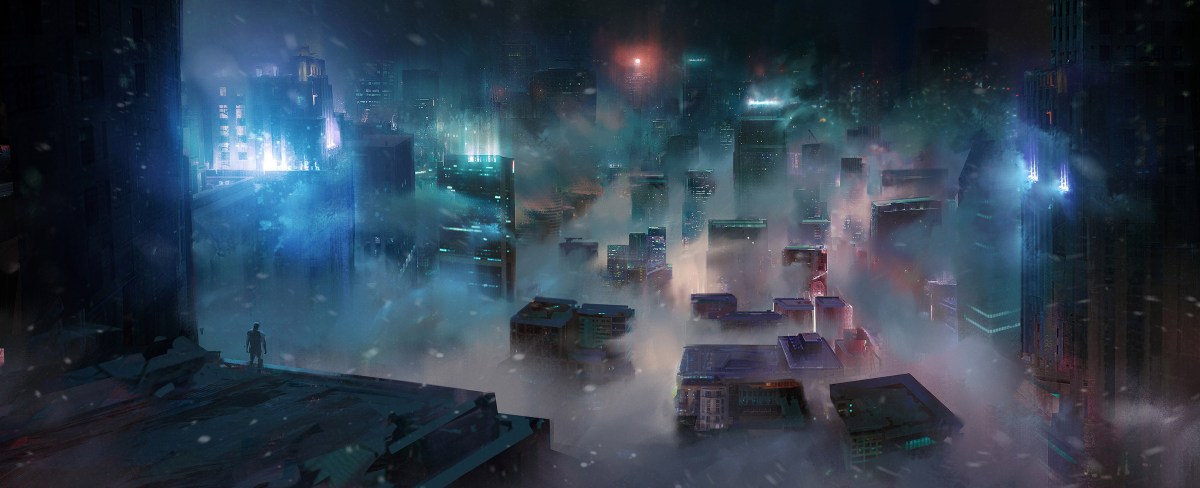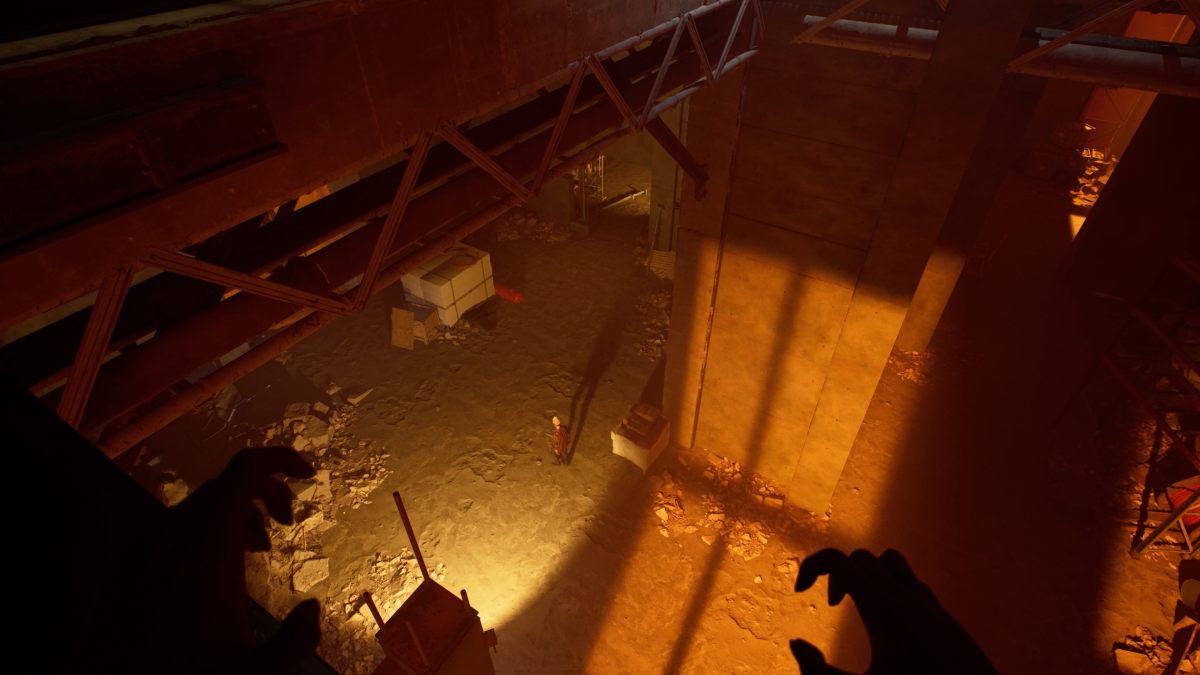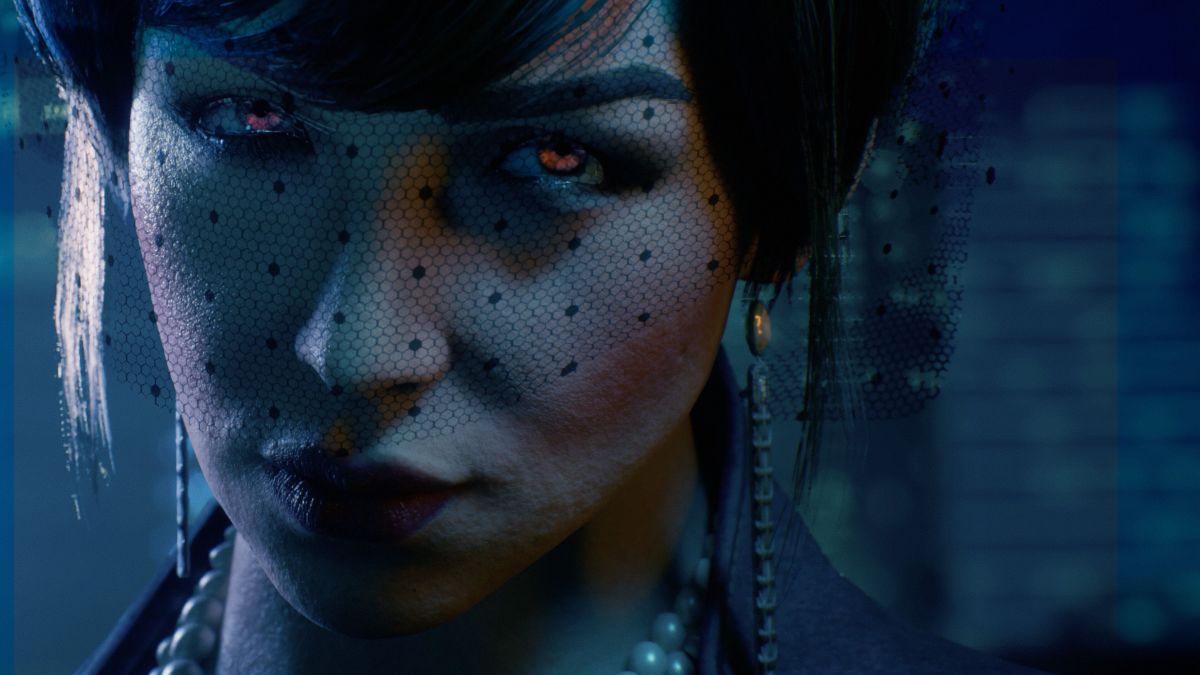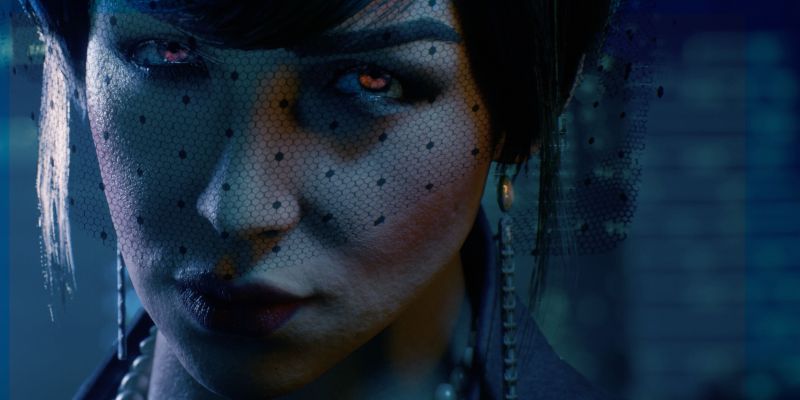In early September, Paradox Interactive broke nearly two years’ silence to announce that development on Vampire: The Masquerade – Bloodlines 2 would be taken over by the UK-based studio The Chinese Room. Bloodlines 2, a direct sequel to the 2004 cult-classic vampire CRPG, had previously been under development at the American studio Hardsuit Labs. Shortly after the announcement was made, I had the chance to talk to TCR’s creative director, Alex Skidmore, and Paradox Interactive vice president Sean Greaney, the “VP of Darkness,” who oversees the World of Darkness franchise. The two were set up at the Vampire: The Masquerade booth at the Penny Arcade Expo in Seattle, in a small, ominous back room.
The Chinese Room (TCR) is best-known for its slower-paced, interactive narrative games. Dear Esther (2012) is arguably what first got TCR on players’ radar, followed by 2013’s Amnesia: A Machine for Pigs, 2015’s Everybody’s Gone to the Rapture, and the 2020 Apple Arcade game Little Orpheus. TCR’s next project, coming in 2024, is the first-person “narrative horror” game Still Wakes the Deep. Bloodlines 2 marks TCR’s first foray into the action-RPG space. Set 20 years after the events of the original Bloodlines, it’s set in Seattle during a torrential, once-a-century snowstorm. You play as a newly awakened elder vampire, who has to deal with both culture shock from being pushed into the 21st century and the cutthroat politics of Seattle’s vampires.
Here’s what we learned during the interview.
Related: Vampire: The Masquerade – Bloodlines 2 Gets New Release Window Following Delays
How did you [the Chinese Room] end up in the conversation for Bloodlines 2?
Sean Greaney: I think that’s more on the publisher’s side. We got to a certain point in the project where we had a diversion of visions, and at that point, it was time to find a studio that shared that vision.
[TCR has] the portfolio. They’re very awarded in the space of narrative design, but also, the important factor is immersion. Audio, voice-over, etcetera. Everything that’s quite important to Bloodlines.
There’s also the action element, and the role-playing element. I think it’s fair to say that at the time we began speaking, TCR didn’t have a huge portfolio there, but they were able to show an ambition level and a plan for upscaling into that space. Alex was part of that plan. Also, the studio was on a fairly rapid growth arc.
This does seem like a increase in complexity and action over what TCR is known for. Have you been hiring more people who are experienced with that sort of thing?
Alex Skidmore: You said it exactly. When The Chinese Room became partnered with Sumo Group [in 2018], which is one of the UK’s largest developers, the goal of that was to branch out to create larger games. Games that had more complexity, as you say, but more action games, larger-scale games.
We ourselves were developing concepts around that when we were approached by Paradox. For us, that was perfect timing. Already, there were a lot of people in the studio who were into Vampire, and felt it resonates with our values and the kinds of stories we like to tell. It was too good an opportunity to pass up.
As for the scaling, TCR before Sumo was about 11 people. During [development on] Little Orpheus, it was a small team of 20 people. Now we’re over 100 working on Still Wakes the Deep, but we’re also supported by the other studios at Sumo Digital. On my design team, we’ve got several designers from [Sumo’s] Nottingham and Sheffield studios, who are working on other action-RPG titles.
I myself joined TCR about a year ago, and my career is mostly action games. I worked on the Fable series, and on Gears of War at The Coalition. I came to TCR and played Still Wakes the Deep, which we see as our legacy title, the next logical step in our games as you see them. We see Bloodlines 2 as us taking a big step forward, trying to map out our future.

Concept art by The Chinese Room
Usually when a studio does narrative games, they only do that sort of game. You don’t often see studios evolve to that level.
Greaney: Part of that is the Sumo Group, and your being able to call in studios from that group.
Skidmore: There are 1,600 developers overall at Sumo Digital, and we’re 100 of those. But that was the mood. That was the appeal of becoming a Sumo Digital studio. There was a desire to break out into more areas.
For us, we’re first and foremost storytellers. This allows us to tell stories in a more live, tactile way, in a way where you’re more immersed and active, as opposed to that sort of exploration we’ve done previously, which are almost like radio plays. You’re there among them, but the events already happened. You’re hearing them after the fact. You can be there live, in the moment, in an action-RPG.
Another cool thing about RPGs is that RPG storytelling is a bit different. For me, it’s well-established in my background, and we also have other narrative designers who come from BioWare. What we really love about creating an RPG story is that it’s a story where the player is fully a part of it, pivotal to it. It won’t just play out the same regardless of who plays it.

Screenshot by Paradox Interactive/The Chinese Room
The Werewolf game Earthblood, another franchise in the World of Darkness setting, was set in the Pacific Northwest, and Bloodlines 2 was going to be set in Seattle. Is that still a thing?
Skidmore: It is.
I’m curious why the Pacific Northwest has been such a focal point for World of Darkness video games.
Greaney: There’s a lot of interesting regions of the world, and it’s an interesting city, Seattle. The foundations of any story set in Seattle are going to be informed by the real-world events here. Here you have a city where the new has come along and eaten the old, multiple times, in fairly short shrift. If you’re going to play a game about creatures who potentially live forever, that’s a great thing to be playing with.
The Werewolf connection, I would say, is it’s an interesting region for werewolves. It’s a medium-age city here. You have the changing industries, you have Big Tech coming in, but you also have the great wilderness, which can’t be over-exploited because of the mountain ranges. It makes sense that this is a place where werewolves are active.
Are you completely starting over with Bloodlines 2?
Skidmore: When we started the project in 2021, our pitch was to put forward our own story, our own vision, our world, with different game mechanics, even. But the thing that we did keep was Seattle.
If you’ve seen the trailer, there’s a shot at the end of a lady with a veil. This sort of ties in with the opportunities that you get from Seattle, a fresh place that hasn’t really been tapped by multimedia yet. The lady in the veil is Lou Graham [below], who was an actual historical figure in Seattle. She ran a brothel in Pioneer Square. When she died in 1901, she was incredibly powerful and rich. There were arguments over her estate. So what if she actually was a vampire, and stepped back?

Screenshot by Paradox Interactive/The Chinese Room
A cool thing in this one is that Seattle is a completely dominated Camarilla city, whereas in Bloodlines, California was technically an anarch state. Here you have this whole political system where everything’s under [Camarilla] control, and at the start of our game, that’s all in jeopardy, and that’s what our story explores.
In Vampire second/third edition, wasn’t Washington an Anarch Free State?
Greaney: Back in the day it was, yeah.
But now it’s Camarilla?
Greaney: Yeah. There might even be a way to look at the local events of the city, and say that would be tracking against the development of the city.
All the tech money coming in let the Camarilla take over?
Skidmore: It’s almost there as a metaphor. We were walking around last night, and you’ve got the area that’s almost the old city, Pioneer Square and all that. Then you’ve got all these new-built skyscrapers. So you’ve got the old and the new up against each other, and I’d say in our city, the Camarilla were more aligned with the new coming in.
With our vision, we focused on the player fantasy, the world, and the story, and very importantly, the vampire side of Seattle. We wanted to create that for our players to explore, as well as a very faithful adaptation of the fifth edition of the tabletop game.
As for the story, it’s set in Seattle in 2024. You’ve got this Camarilla city, and before the player starts the game, an event has happened that has shaken up the balance of power. At this time, it’s the worst snowstorm that Seattle’s seen in a hundred years. That gives us a great mood, and obviously, blood is a great contrast to snow.
There’s a line in the trailer that says, “An elder has awakened.” That elder is you.
